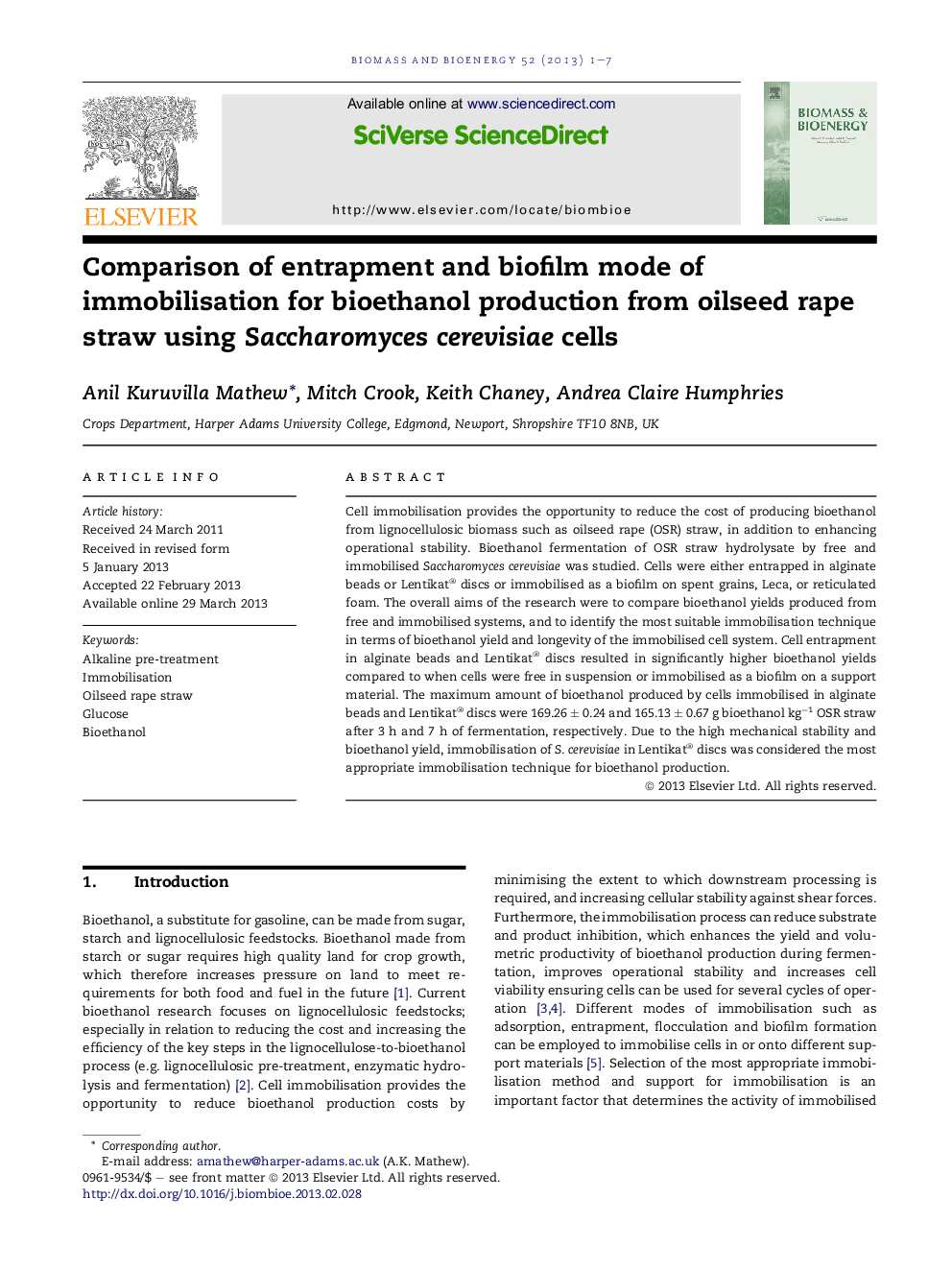| Article ID | Journal | Published Year | Pages | File Type |
|---|---|---|---|---|
| 677057 | Biomass and Bioenergy | 2013 | 7 Pages |
Cell immobilisation provides the opportunity to reduce the cost of producing bioethanol from lignocellulosic biomass such as oilseed rape (OSR) straw, in addition to enhancing operational stability. Bioethanol fermentation of OSR straw hydrolysate by free and immobilised Saccharomyces cerevisiae was studied. Cells were either entrapped in alginate beads or Lentikat® discs or immobilised as a biofilm on spent grains, Leca, or reticulated foam. The overall aims of the research were to compare bioethanol yields produced from free and immobilised systems, and to identify the most suitable immobilisation technique in terms of bioethanol yield and longevity of the immobilised cell system. Cell entrapment in alginate beads and Lentikat® discs resulted in significantly higher bioethanol yields compared to when cells were free in suspension or immobilised as a biofilm on a support material. The maximum amount of bioethanol produced by cells immobilised in alginate beads and Lentikat® discs were 169.26 ± 0.24 and 165.13 ± 0.67 g bioethanol kg−1 OSR straw after 3 h and 7 h of fermentation, respectively. Due to the high mechanical stability and bioethanol yield, immobilisation of S. cerevisiae in Lentikat® discs was considered the most appropriate immobilisation technique for bioethanol production.
► Bioethanol production from OSR straw using free and immobilised yeast cells. ► Entrapment mode of immobilisation was studied using alginate and Lentikat®. ► Biofilm mode of immobilisation studied using spent grains, reticulated foam, Leca. ► Cells immobilised in Lentikat® was superior to other supports used in this study.
